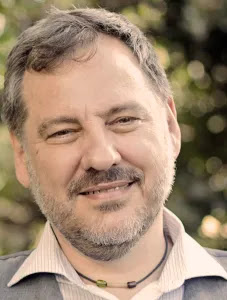Guest blog: Dealing with the Delta: A Story of Change through Barren Transitional Lands Management
Guest blog by A.Z.M Nazmul Islam Chowdhury Innovator and Founder Pumpkin Plus Agro Innovation Limited
Transforming lands, transforming lives https://youtu.be/7ZN92tAmdFg .The innovation comprises the demonstration and widespread adoption in 5 districts of North West Bangladesh of ‘sandbar cropping’, an innovative, simple, cost-effective technology which transforms silted barren lands created by flooding and, as a result, helps thousands of displaced, extreme-poor families surviving on the edge of mighty rivers to escape from extreme poverty and hunger; climate change and recent covid generated socio-economic shocks.
Pumpkin Plus, a
new generation private sector company (www.pumpkinplus.com),
has founded by the innovator in 2017 with a vision to shift handout-based
charity approach, towards a community driven agribusiness model through Riverbed
Farming System. It aims to assist these displaced people through offering them
support and train them in managing productive livelihoods, by using
transitional common property natural resources and to promote youth and women
led agribusiness model to cope with climate change and combat series of socio-economic
shocks and development causes.
After each rainy season, large sand islands appear in
the main rivers of NW Bangladesh. These 'lands' are common property resources
but until now have not been used for any productive purpose. The innovator has
successfully demonstrated that the growing of pumpkin, squashes and other high
value crops/vegetables in small compost pits dug into the sand is both possible
and profitable. Since its inception in 2005 it has reached to 22131 extreme
poor households (of which 65% were women), who have produced over 150K MT of
pumpkin worth 30m USD over a period of 12 years.
Since 2019-2020 and 2020-2021 in two seasons, Pumpkin
Plus led 1000 agri-entereuners have produced over 56K MT worth 1.5m USD with an
average cost: benefit ratio 1:4
The innovative
cropping technology developed opens up otherwise unproductive lands and is
ideally suited to adoption by displaced and landless households. The technology
appears to be low risk yet shows an impressive financial return.
The pumpkins produced on the sandbars can be stored in
people's houses for up to a year and therefore greatly assist poor households
from both income generation and food security perspectives. In addition to the
pumpkins, the leaves and flowers of the plant can be used for food, and the
entire plant fed to livestock, or composted for the following year, at the end
of the dry season. Sandbar cropping has transformed a barren landscape and
these 'mini deserts' have now been turned into productive green fields which
also support a wide range of insect, birds and other small animal species due
to the habitat created.
The sandbars that emerge each year as the rivers
recede are not stable enough to support natural vegetative growth and remain as
a barren sand area until the river rises again. By digging small pits and
lining these pits with compost, the innovation has demonstrated that these
areas can be made productive. Large scale irrigation is not necessary as the
sandbars are usually close to the river and watering is done by hand. No
pesticides or minimum inorganic inputs are necessary.
Bangladesh is a deltaic country located
within the floodplains of the three great rivers; the Ganges, Brahmaputra and
the Meghna. These rivers drain a total catchment area of 1.72 million Sq. km of
which only 7% lies within the country, and has an estimated 2709 Sq.km (IWM
& PA, 2018) of newly accreted lands, along
the banks of these river systems in the North of the country and have same
amount of lands in other river system and coastline islands. These transitional lands or char islands are composed of coarse sand and by definition belong to the government. But in reality,
these charlands
have been inhabited by people who became landless or were displaced due to
river erosion, floods or other natural disasters. The wider dissemination of
the innovation with right policy implications, could bring a big
transformational change of the fate of millions of our new generations to come
by ensuring food security and sustainable supply of food for over 200 million
population by 2050.
Bangladesh is
desperately short of arable lands and struggles to feed its growing population.
The technology would seem to have a much wider application in other dry areas
and could even become an important coping strategy in some areas adversely
affected by climate change in some part of the world.




Comments
Post a Comment